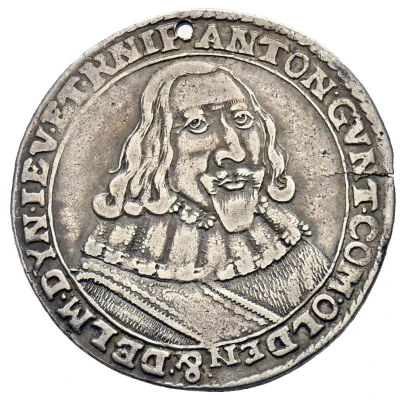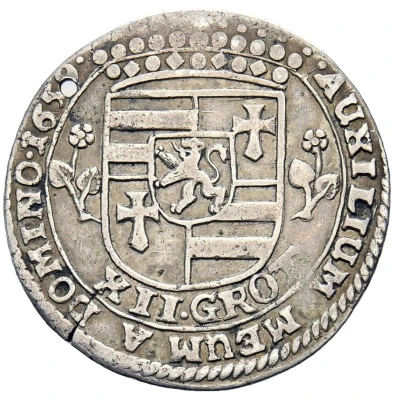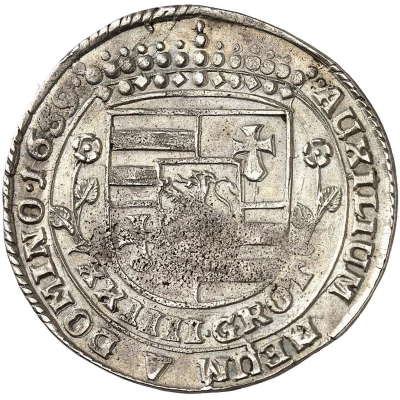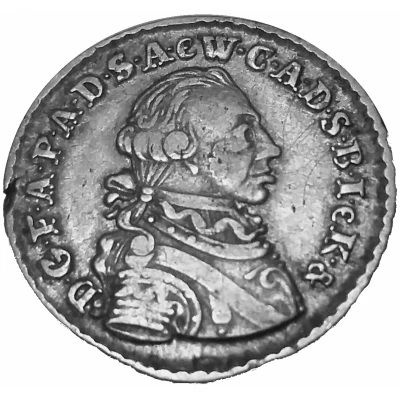
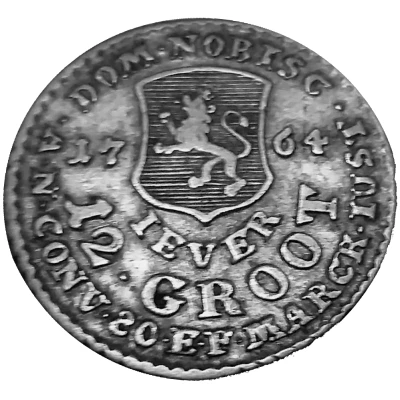

12 Grote - Frederick August of Anhalt Zerbst type I
1764 year| Silver (.720) | 4 g | 18 mm |
| Issuer | Lordship of Jever (German States) |
|---|---|
| Lord | Frederick Augustus (Friedrich August) (1747-1793) |
| Type | Standard circulation coin |
| Year | 1764 |
| Value | 12 Grote = ⅙ Thaler |
| Currency | Thaler |
| Composition | Silver (.720) |
| Weight | 4 g |
| Diameter | 18 mm |
| Shape | Round |
| Orientation | Medal alignment ↑↑ |
| Demonetized | Yes |
| Updated | 2024-10-05 |
| Numista | N#85145 |
|---|---|
| Rarity index | 90% |
Reverse
Lion arms divide date, denomination below. Legend surrounding.
Script: Latin
Lettering:
DOM • NOBIS
17 64
IEVER
12 • GROOT
• AN • CONV • 80 •E•F• MARCK • IUST•
Edge
Helical reeding
Comment
Frederick Augustus, Prince of Anhalt-Zerbst (8 August 1734 in Alt Stettin – 3 March 1793 in Luxembourg), was a German prince of the House of Ascania and the last ruler of the Principality of Anhalt-Zerbst.He was the second and sole surviving son of Christian Augustus, Prince of Anhalt-Zerbst (since 1742 of all Anhalt-Zerbst) by his wife Johanna Elisabeth, daughter of Christian August of Schleswig-Holstein-Gottorp, Prince of Eutin, and was a younger brother of Russia's Catherine the Great. https://en.wikipedia.org/wiki/Frederick_Augustus,_Prince_of_Anhalt-Zerbst
In 1667 Jever was through distaff passed under control of the Anhalt-Zerbst. After Prince Frederick August, who had supported the English in the American Revolutionary War for financial reasons, died in 1793, the male-line of Anhalt-Zerbst perished and its territories were split. Jeverland was then given to Catherine II of Russia, formerly Princess Sophia of Anhalt-Zerbst and Frederick August's sole surviving sibling. It remained Russian until Napoleon's armies occupied it in 1807. Between 1808 and 1810 it was part of the Kingdom of Holland, a Napoleonic vassal state. When the French were forced to withdraw in 1813, Russia regained possession of Jever and gave it to the new grand dukes of Oldenburg in 1818. https://en.wikipedia.org/wiki/Jever#History
Interesting fact
One interesting fact about the Standard circulation coin 12 Grote - Frederick August of Anhalt Zerbst (type I) 1764 from Lordship of Jever (German States) made of Silver (.720) weighing 4 g is that it was minted during a time of great change and upheaval in Europe. The coin was minted in 1764, just a few years before the outbreak of the American Revolution in 1776, and during a period of increased trade and economic growth in Europe. This coin is a tangible reminder of the complex political and economic landscape of 18th century Europe, and the ways in which different regions and rulers sought to exert their influence and control over their territories.
